A short post on what could soon be the longest bridge span in Canada.
There is much to say on this boondoggle (there, I put it out there right up front so you know how I feel about this plan) and the pretend “business case” presented to defend it. I am sure I will be writing something more lengthy and detailed in the coming weeks, but I need to end one line of discussion immediately, so this short note.
In discussing this project, the strongest proponents and the more flaccid skeptics (unfortunately, I don’t know in which of those camps to include the Province’s official opposition), are quick to say “well, something has to be done about the traffic there!” which to most seems like justification enough to spend $3.5 Billion on a solution right out of 1950. The Minister of Speeding even invoked his 1950s predecessor Phil “Air pollution is the smell of money” Gaglardi, calling anyone who doubted a 1950’s solution to a 2015 problem a “naysayer”, like that is the natural antonym to his self-description as a capital-V “Visionary”.
So if we all agree that “something has to be done about the traffic there” (and if we choose to ignore that “the traffic there” has been steadily decreasing for a decade), perhaps we should have a meaningful discussion about what the options are to address that traffic problem. Right off the bat, however, the most ignored point is that we don’t need to get rid of all of the traffic to fix the traffic problem. We only need to get rid of a little bit of the traffic.
Let me explain. But first, we need to ignore this graphic in the Project Definition Report:
…because it comes without proper citation to its source, and appears to reflect some imaginary projection of what the actual traffic counts in the tunnel are. I say this, because the Ministry helpfully provides actual traffic counts in this document, and as Station P-16-4NS is the counter that measures the number of vehicles going through the tunnel, here is the most recent data:
Congestion occurs somewhere around 1,500 – 1,600 vehicles per hour per lane. That’s just one of those numbers transportation geeks keep in the back of their mind when reviewing this stuff. Note that the tunnel has a counter-flow lane, so peak travel is carried on three lanes. The two big peaks flatline just over 1,500 x 3 for about two hours every morning and two hours every evening. At the same time, the single-lane against-peak flow flatlines at about the carrying capacity of the reduced lane count, also causing congestion until the counter-flows can re-open to give a little relief. The tunnel is at capacity during the rush, which is why traffic is reducing on this route, not going up.
Those peaks and flatlines are important, because those are the natural limits of the system, stay a few hundred cars below that, and you have the carrying capacity of the bridge, and (barring accidents and the such, but let’s not go there now) you have a system working at optimum. Looking at the data, that optimum for the system only requires removing about 10-15% of the traffic.
These pie charts from the same report demonstrate how easy it would be to do that:
SOV? Single Occupant Vehicle. A car with one person in it. Anywhere between 65% and 84% of the vehicles driving through the bridge. Add the 2OV (Two Occupant Vehicle), and you realize that the problem at the tunnel is not “goods movement”, as trucks are only on average about 5% of the traffic. Also notice transit vehicles are 1% of the traffic on the tunnel. Despite that 1%, we also learn from the consultation documents that up to a quarter of the people travelling through the tunnel are in that 1% of the traffic:
So how can we reduce the traffic in the tunnel by the required 15%? Get a few of the people in those SOVs into transit. Not all of them (and that is the false dichotomy argument we must avoid), but just a few of them. I’m not even suggesting that tunnel traffic see a radical mode shift, just one in line with transportation patterns north of the Fraser. To do this you need to provide more and better transit service, because to get people out of their cars, you need to give people viable and reliable alternatives. Even the incredibly sub-par overcrowded, under-scheduled, and poorly-connected transit service through the current tunnel moves up to a quarter of the people who go through the tube. Imagine what would happen if it was rapid bus, or light rail…
Alternately, if funding is a problem, you could also do the only thing ever proven to reduce traffic congestion in urban areas: put a price on the road. No need to build a new bridge if you put a small toll on the existing tunnel. That very effectively reduced traffic on the Port Mann Bridge corridor. Then you could use that toll to fix the safety issues at each end and upgrade the 5o-year-old mechanical systems, which by all accounts is an order of magnitude less money than the new bridge would cost.
Of course, to “solve the problem”, any rational transportation planner would suggest the Government do both. This is why the Mayors of the region, who have been grappling with a failing transportation system (and the provincial government’s reluctance to fix it) for a decade now, recognize that the Massey Replacement is not solving any problems. They rightly point out that it will both create larger problems, and take billions of dollars away from the alternative solutions that *can* fix the problem.
Wow. This short note sure got long, what with the graphs and such. Sorry, I will sum up.
Yeah, maybe somebody has to do something about the traffic here, but the solution being offered is far from “Visionary”. Instead, it is an expensive kludge being offered by people who lack the imagination and courage (two characteristics that define true Visionaries) to address a problem in a creative new way, instead relying on the ghost of a 1950s ideology.
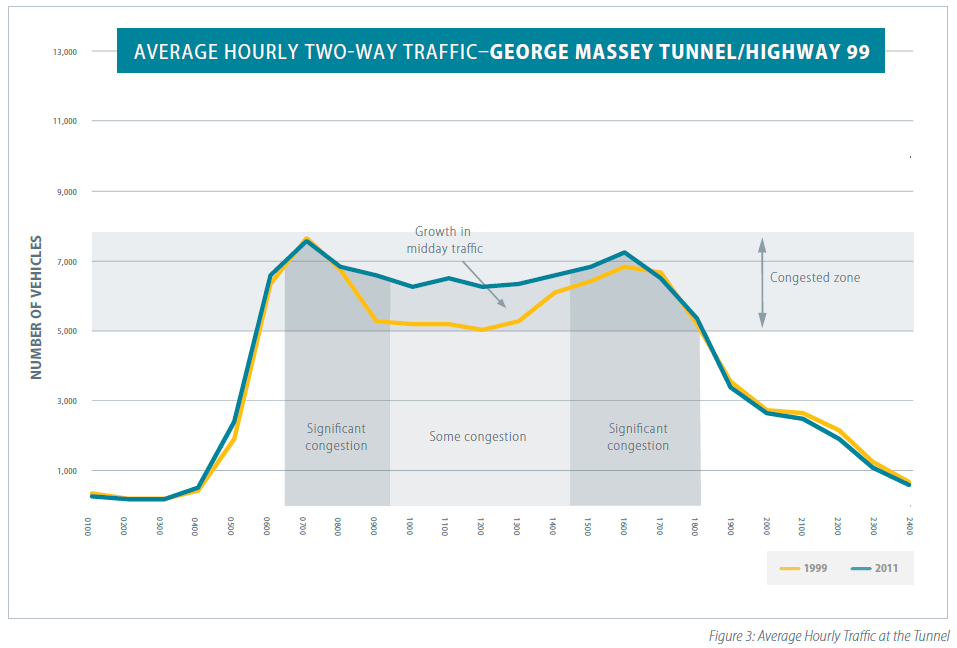
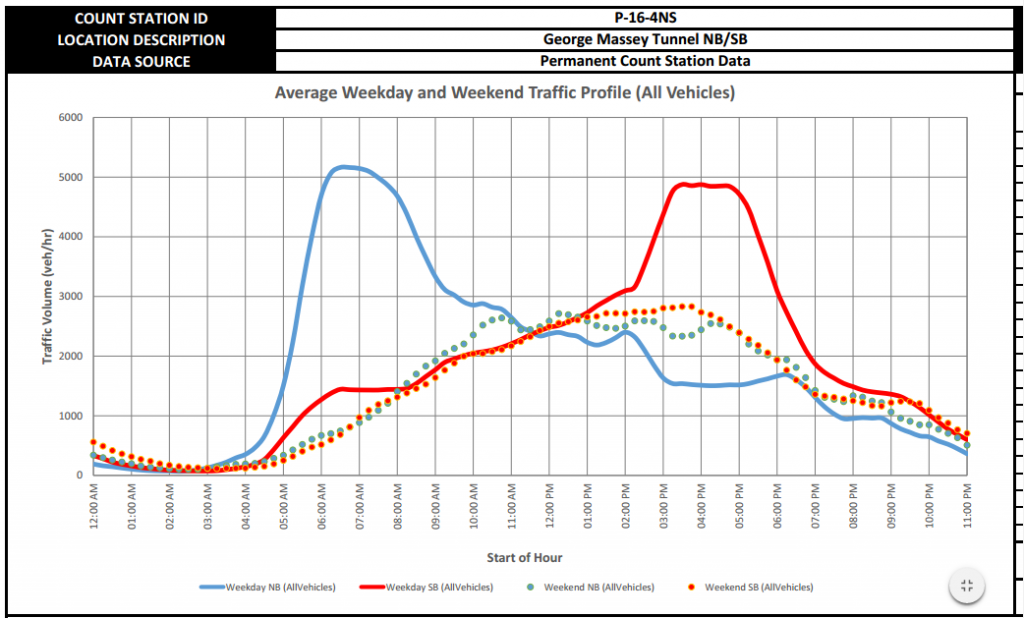
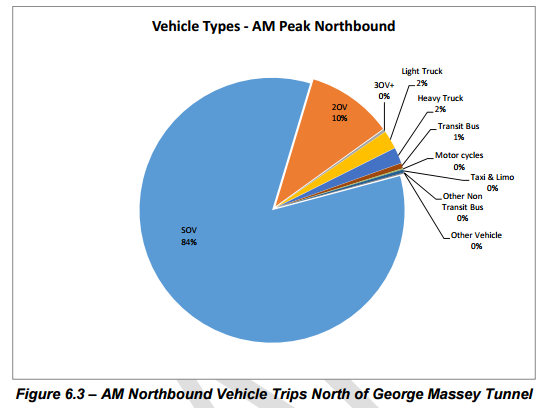
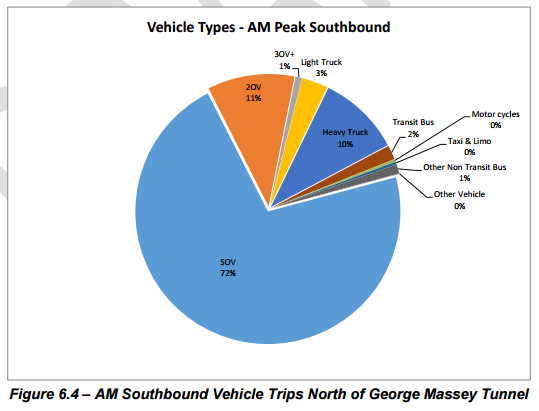
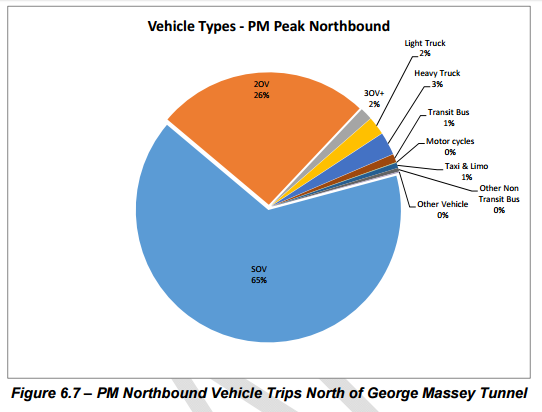
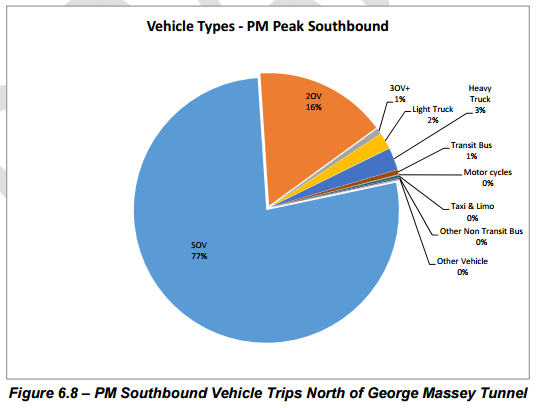
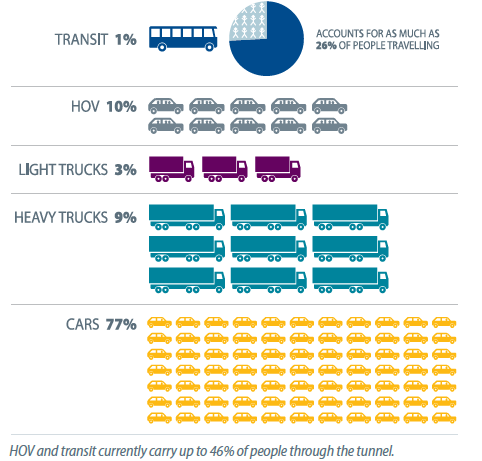
W0w!…that sounds really smart. Very creative indeed! I wouldn’t have thought of that solution either (hence why I’m not a city planner). Well done Pat.
Has anybody estimated the cost of a Canada Line extension south across the Fraser to a station (a) with a secure parking lot, and (b) convenient to the highway 99/17A area? Would this idea provide a decent cost/benefit ratio?
What excellent information and alternatives. But you’re missing the point. They want this bridge to improve deeper shipping lanes to Port Metro Vancouver Fraser Surrey Dock. It a cash cow for the Province.
Hi Pat,
Well written article, but you seem to have skipped over the biggest reason why they want to build a bridge there and remove the tunnel. They want to give larger freighters access to the port. Right now the tunnel is the limiting factor, there isn’t enough clearance to get the largest vessels over it.
If they really want to scrap the tunnel to create shipping access, shouldn’t the port/shipping industry be the ones doing the heavy financial lifting for this project?
I find the governments misdirection with this project verging on criminal.
Steve
Exactly. The conversation for the public has been skewed toward “what will reduce traffic” from the actual agenda of giving larger vessels (read LNG freighters) clearance…..and since Port Metro has lots of Federal dollars, shouldn’t they be footing the bill??
That said, Mr. Johnstone’s points are very well made, and a service to the public.
I guess my second short post will have to be on the draft issue…